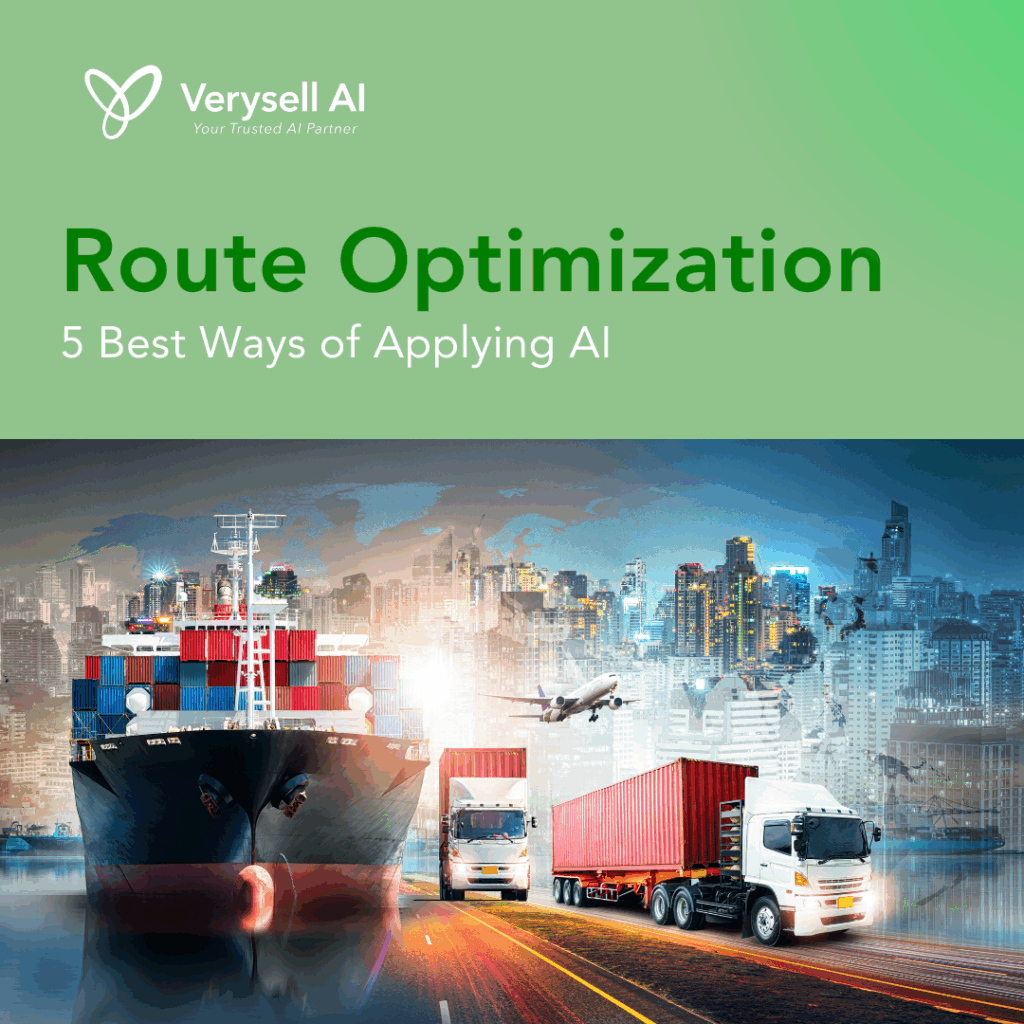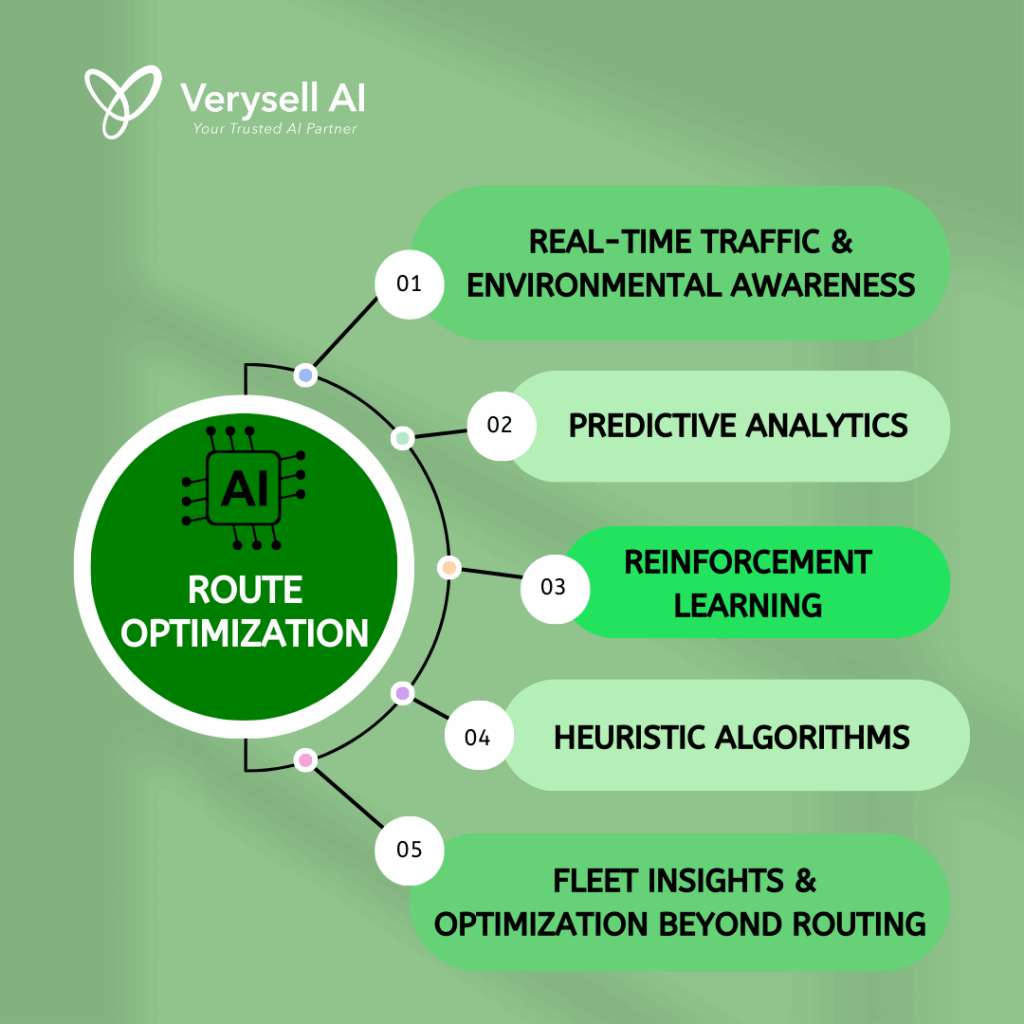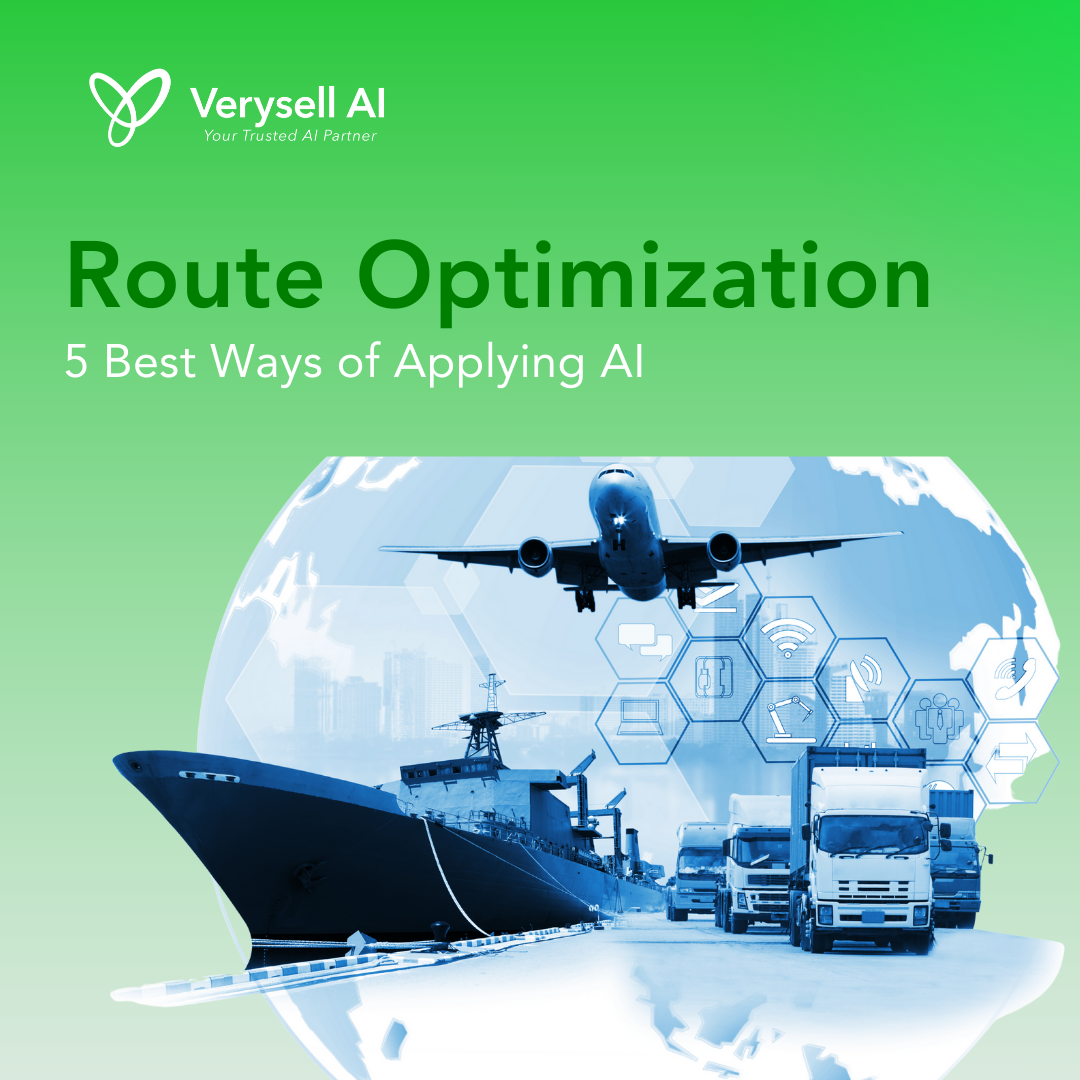In logistics, every minute counts. Efficiency and accuracy decide who stays ahead. A key factor is route optimization, finding the best travel paths for transport and delivery. Traditional planning methods are no longer enough. With AI, businesses can optimize routes in smarter ways. AI-powered systems track real-time traffic, predict delays, and adjust routes on the go. The result is higher efficiency, lower costs, and better customer service. As AI continues to reshape logistics, companies have more options than ever to improve how they plan and manage routes.

This comprehensive blog is going to provide you an in-depth understanding of AI in route optimization by explaining the basics of this process, key aspects of route optimization success and 5 most outstanding ways of deploying AI to optimize route planning.
1. Get to Basic – What is Route Optimization?
Logistics route optimization is the process of determining the most efficient routes for transporting goods from one location to another, considering factors such as vehicle capacity, delivery schedules, traffic conditions, and fuel costs. The goal is optimized routes that reduce time, distance, and resources while maximizing productivity and cost-effectiveness.
With AI, big data and IoT, this process is improved by predicting traffic patterns, choosing suitable routes and allocating resources accordingly. Due to applying real-time route planning to adapt to changing situations, the process can be referred to as “Dynamic Route Optimization.”
2. Effective Strategies for Route Optimization
Route optimization is essentially about assigning specific timestamps to each stop along a driver’s route to maximize efficiency. When you do it correctly, it can balance workloads across your drivers while boosting overall operational productivity.
Plan schedules in advance
Creating your route schedule well ahead of time gives you ample opportunity to notify drivers and accommodate any changes before routes begin. Look for tools that allow planning weeks in advance to streamline this process.
Balance workloads across drivers
Distribute assignments evenly or based on criteria like location, skill set, or cost considerations to ensure efficiency and fairness.
Leverage historical data
If you haven’t already, start collecting route performance data. Many route planning solutions come with analytics features to help identify opportunities for improvement and optimize operations based on past trends.
Map routes with GPS tracking
Modern route optimization solutions often integrate GPS and geographic information systems (GIS) data, along with real-time traffic updates. This allows dispatchers to adjust routes on-the-fly to avoid delays caused by traffic, accidents, or other unexpected events, ensuring timely deliveries and responsive service.
Dynamic scheduling and dispatching
Dispatchers can create flexible schedules that account for every driver or technician’s availability, breaks, training, and certifications. By considering all these factors, schedules become dynamic and more productive. This helps assign tasks efficiently while maximizing the capabilities of your team.
Adjust in real time
With real-time tracking, you can monitor your fleet at all times and make immediate adjustments for last-minute route changes or urgent service requests.
Managing all these aspects manually can quickly become overwhelming. That’s why route optimization software is invaluable. It turns hours of planning into just minutes, letting you focus on running operations smoothly while keeping drivers and customers satisfied.
3. How Does AI Step in Route Optimization?
With the rapid development of AI, route optimization is taken to the next level. AI-powered systems can process historical route data, traffic patterns, weather conditions, and driver performance to generate the most efficient routes.
Paul et. al (2025) mentioned several outstanding AI techniques for improve route planning and scheduling, each with its unique strengths:
3.1. Machine Learning
Machine learning identifies patterns in traffic flow, delivery times, and historical route data. By analyzing this information, it can predict the most efficient delivery routes, helping reduce delays and operational costs.
3.2. Deep Learning
Deep learning processes large and complex datasets in real time. This allows AI systems to adapt dynamically to traffic congestion, road closures, or changing weather conditions, ensuring routes remain optimal even under fluctuating conditions.
3.3. Genetic Algorithms
Genetic algorithms use evolutionary strategies, similar to natural selection, to explore multiple route combinations. This approach is especially effective for multi-vehicle delivery scenarios, finding the best combination of routes to minimize total travel time and distance.
3.4. Reinforcement Learning
Reinforcement learning improves route selection through trial and error. The system “learns” from past decisions, continuously optimizing decision-making for dynamic situations such as last-minute service requests, accidents, or unexpected traffic delays.
4. 5 Best Ways of Deploying AI to Dynamic Route Optimization

4.1. Real-Time Traffic & Environmental Awareness
AI systems ingest live traffic feeds, weather data, and incident alerts to continuously adjust routes on the fly, whether to avoid congestion, detours, or weather-related delays. Modern AI routing tools integrate data from sources like Google Maps, Waze, DOT sensors, and weather forecasts to update routes promptly and keep ETAs accurate. This leads to significant reductions in delivery miles (10 – 20%), fuel costs, and late deliveries.
4.2. Predictive Analytics for Intelligent Planning
Rather than reacting, AI predicts upcoming conditions like peak traffic times, delivery demand surges, or weather patterns to optimize routes before issues arise.Techniques such as machine learning, combined with historical and real-time data, help anticipate delays, closures, or high-demand pockets, enabling proactive rerouting and resource allocation. Tools that forecast demand (even down to SKU-level in some cases) allow dynamic dispatching and scheduling to better match vehicle assignment with anticipated workloads.
4.3. Reinforcement Learning (RL)
RL systems or more advanced deep reinforcement learning (DRL) learn optimal routing policies from experience, adapting decisions based on rewards and evolving environmental feedback.
- Research exploring RL-based solutions to the Dynamic Vehicle Routing Problem (DVRP) with stochastic arrivals shows improvement over conventional methods, enabling instant re-routing decisions.
- RL-based models that carefully define state-space features, such as vehicle capacity and dynamic order feeds, significantly boost performance in last-mile delivery scenarios.
4.4. Heuristic Algorithms
When exact optimization is impractical due to complexity or real-time demands, heuristic and evolutionary methods offer fast, near-optimal routing solutions.
- Ant colony optimization has been successfully deployed for dynamic routing with time windows, efficiently updating routes as new customer requests arrive.
- Heuristic methods, including genetic algorithms and simulated annealing, are commonly used to tackle large, multi-vehicle routing challenges under tight time constraints.
4.5. AI-Driven Fleet Insights & Optimization Beyond Routing
AI doesn’t only optimize paths. It enhances overall fleet performance by integrating telematics, safety monitoring, and even driver behavior analysis.
- Small companies like 3 Men Movers (Texas) use AI-powered cameras to detect distracted driving and combine that with routing AI that avoids high-crime or high-risk zones, resulting in fewer accidents and safer routes. (Business Insider, 2025)
- Uber Freight leverages machine learning to match loads dynamically, reduce “empty miles” by 10–15%, and optimize routing for both efficiency and environmental impact. (Business Insider, 2025)
5. Conclusion
AI is changing how logistics companies plan and run their routes. From real-time traffic updates to predictive planning and advanced learning methods, AI makes route optimization faster, smarter, and more reliable. The benefits are clear: lower costs, higher efficiency, safer fleets, and better service for customers.
Still, applying AI is not just about the technology. It requires the right strategy, tools, and expertise to fit each company’s workflow. That’s where AI partners like Verysell AI can help. Through Functional Consultancy, businesses get guidance on how to integrate AI into their operations, streamline processes, and make the most of intelligent route optimization.
AI-driven logistics is no longer the future. It is here, and companies that embrace it now will move ahead faster and more efficiently.


